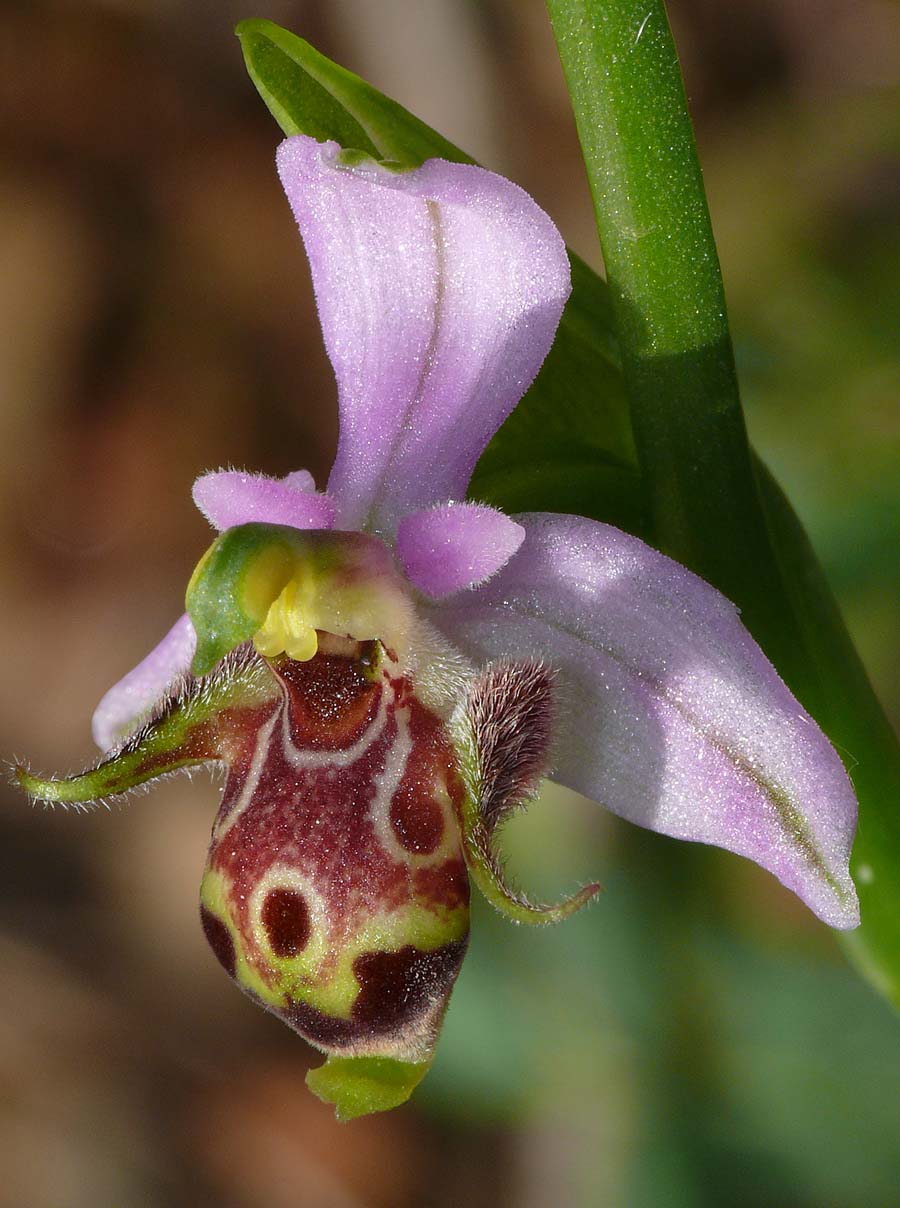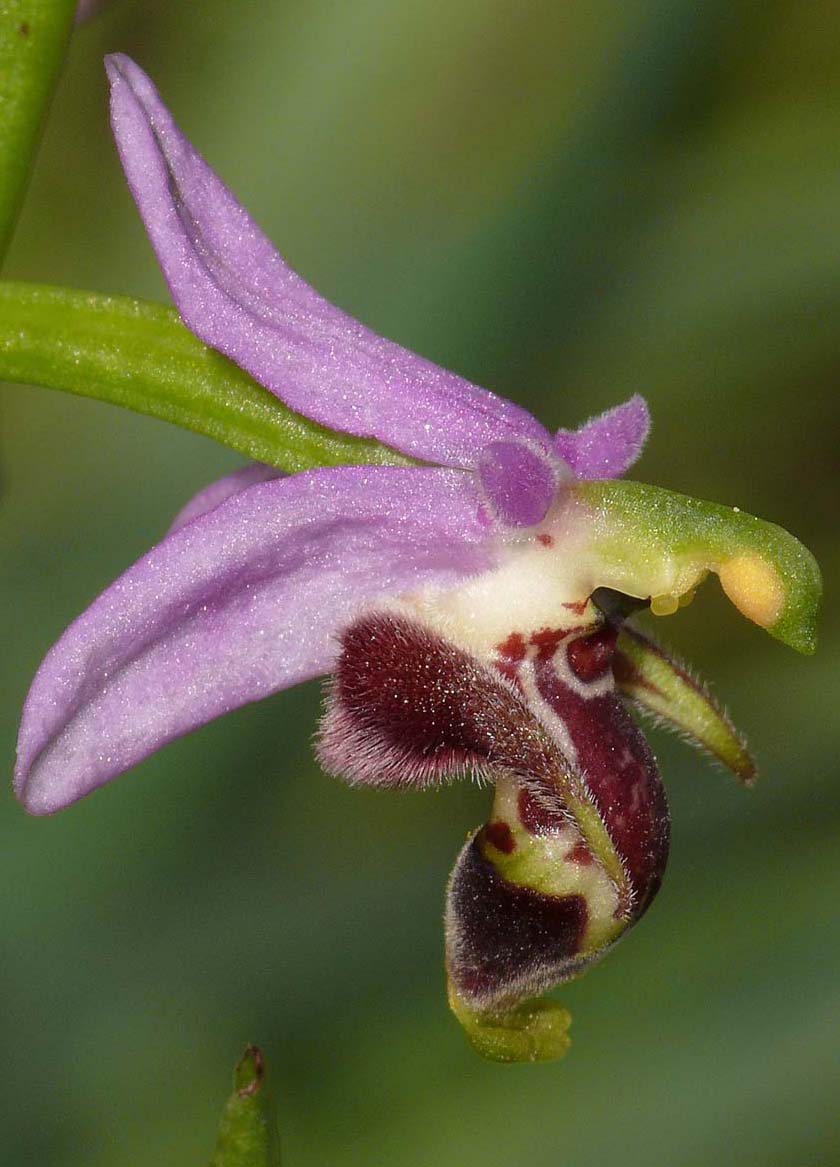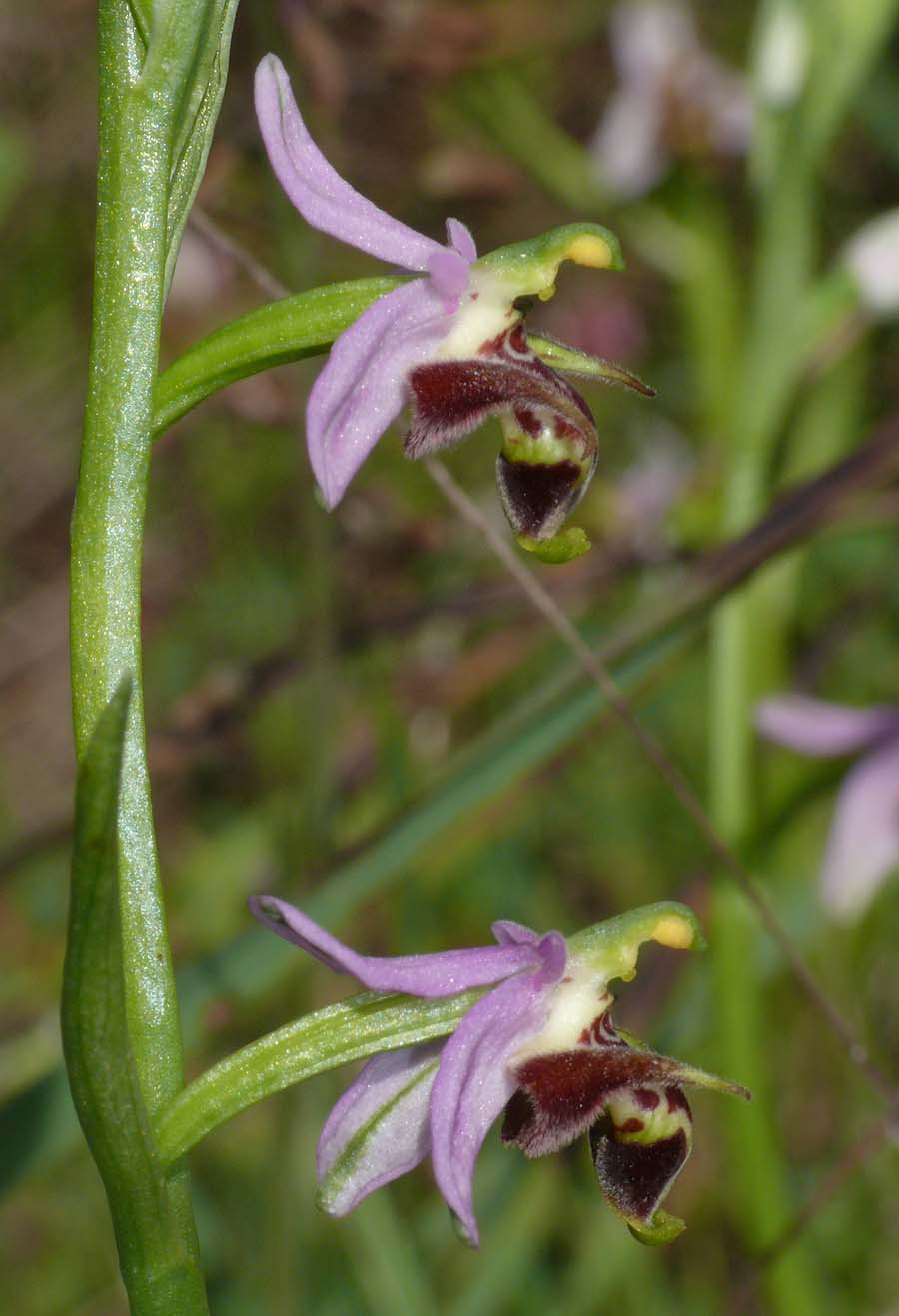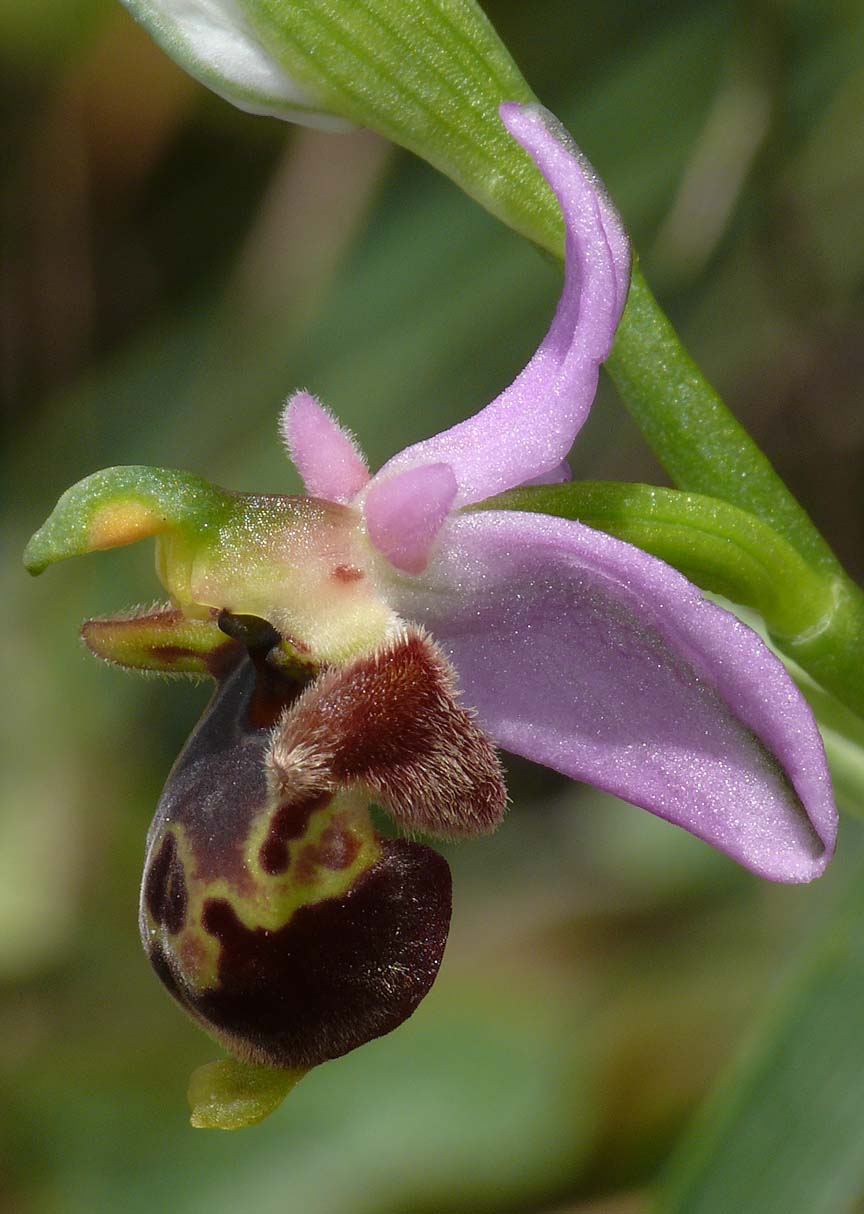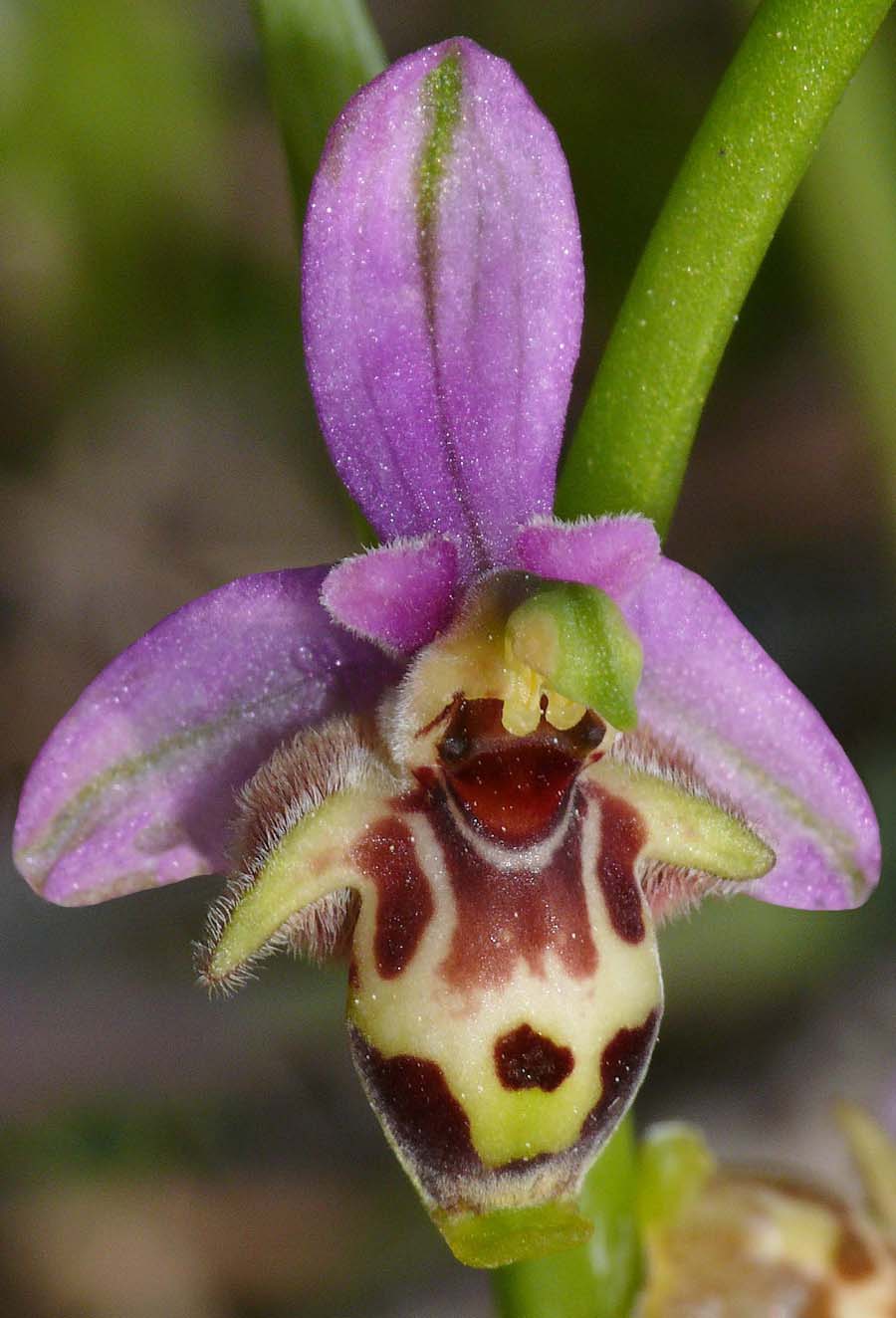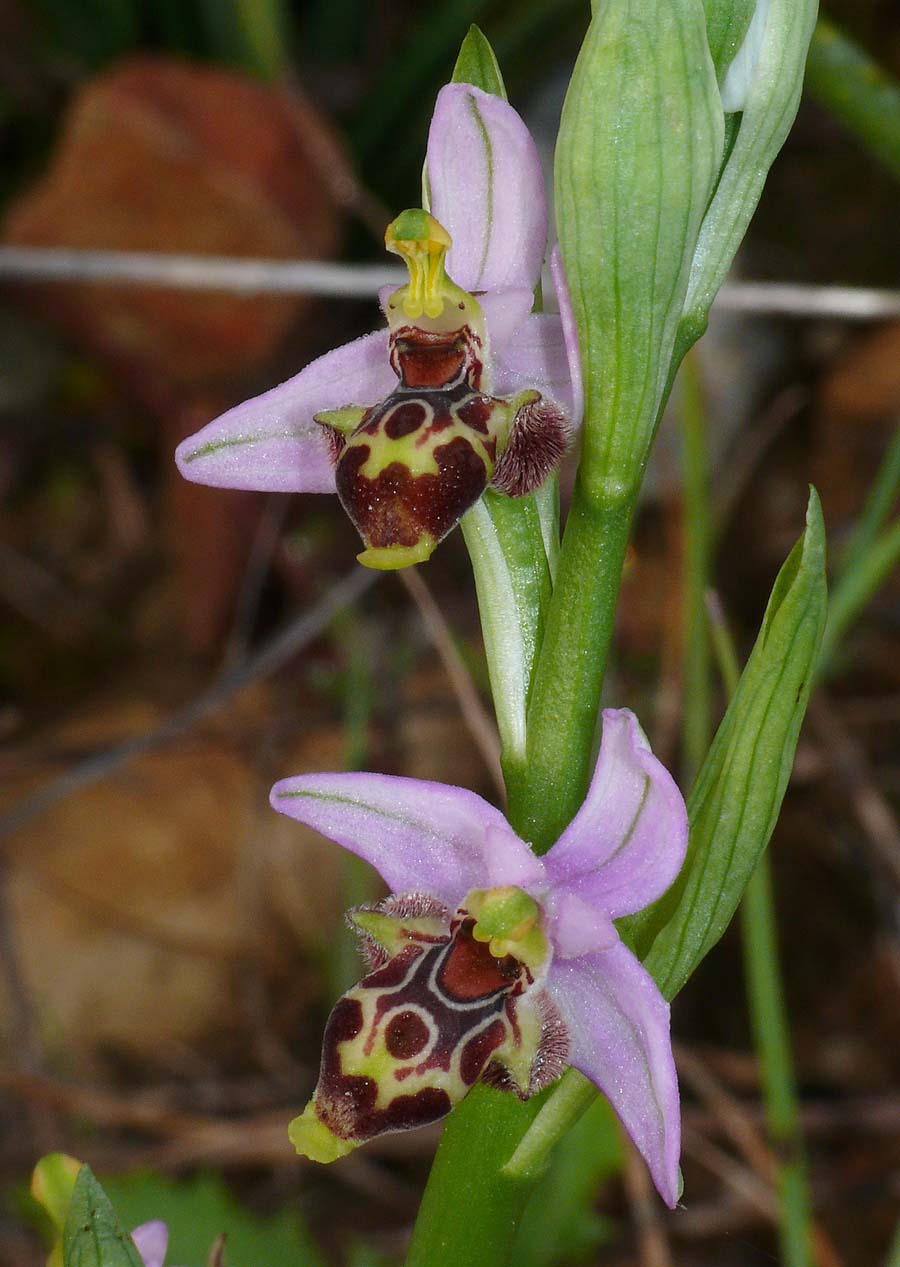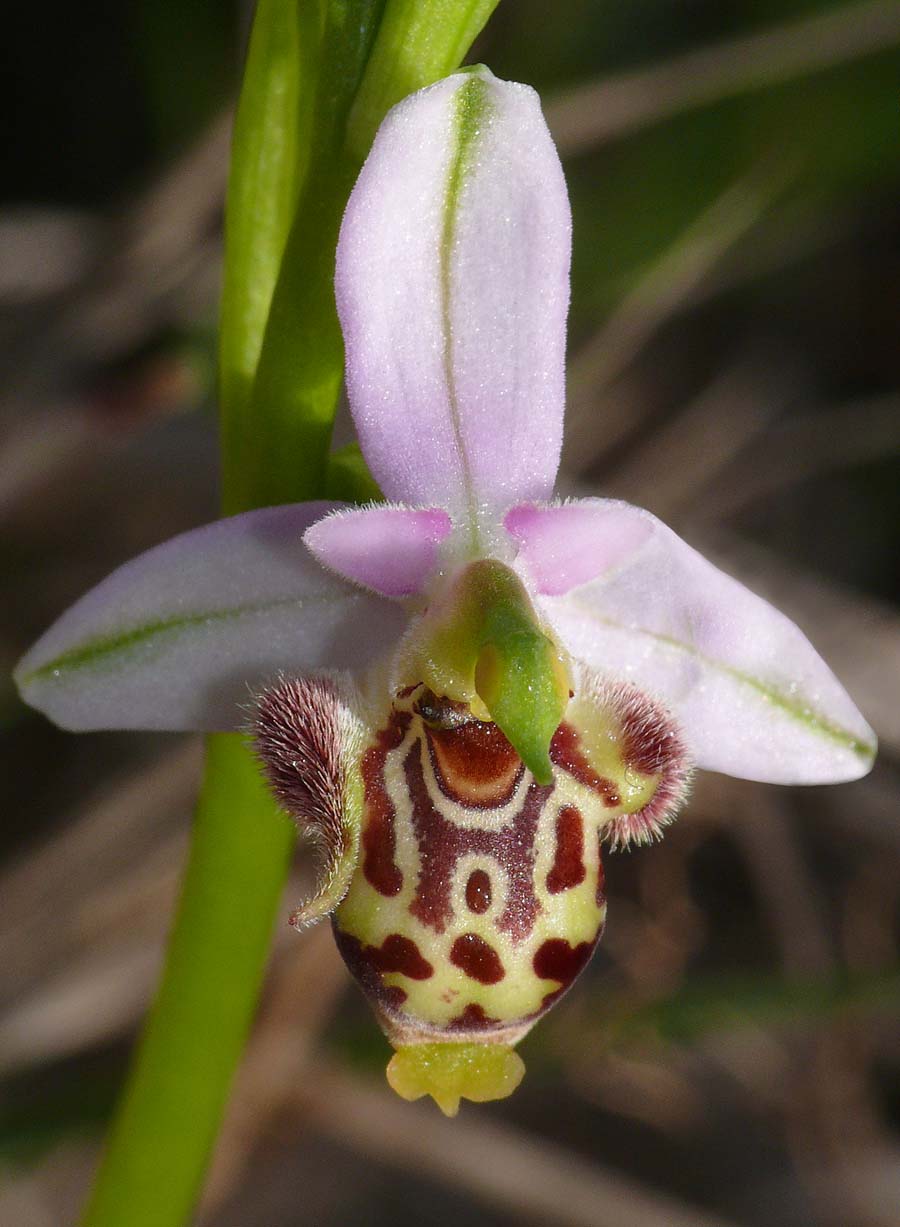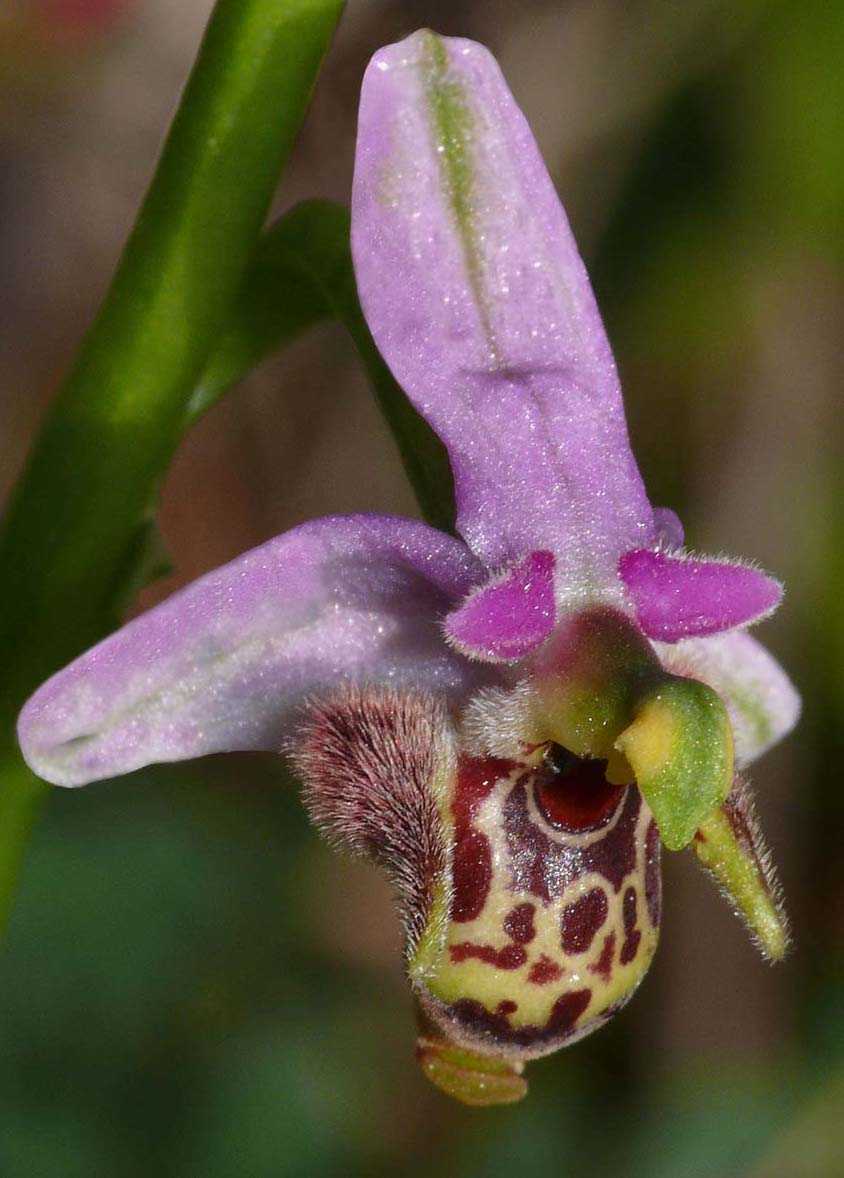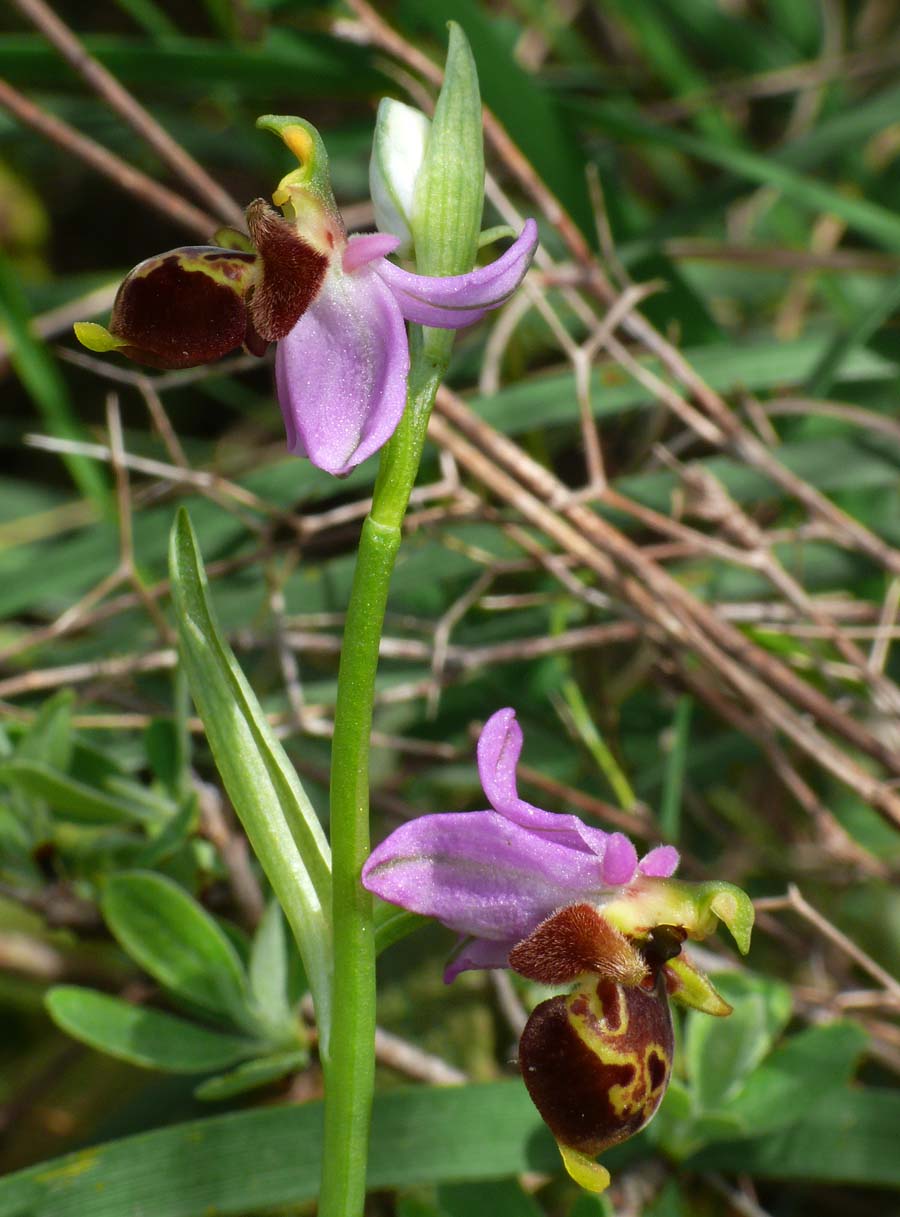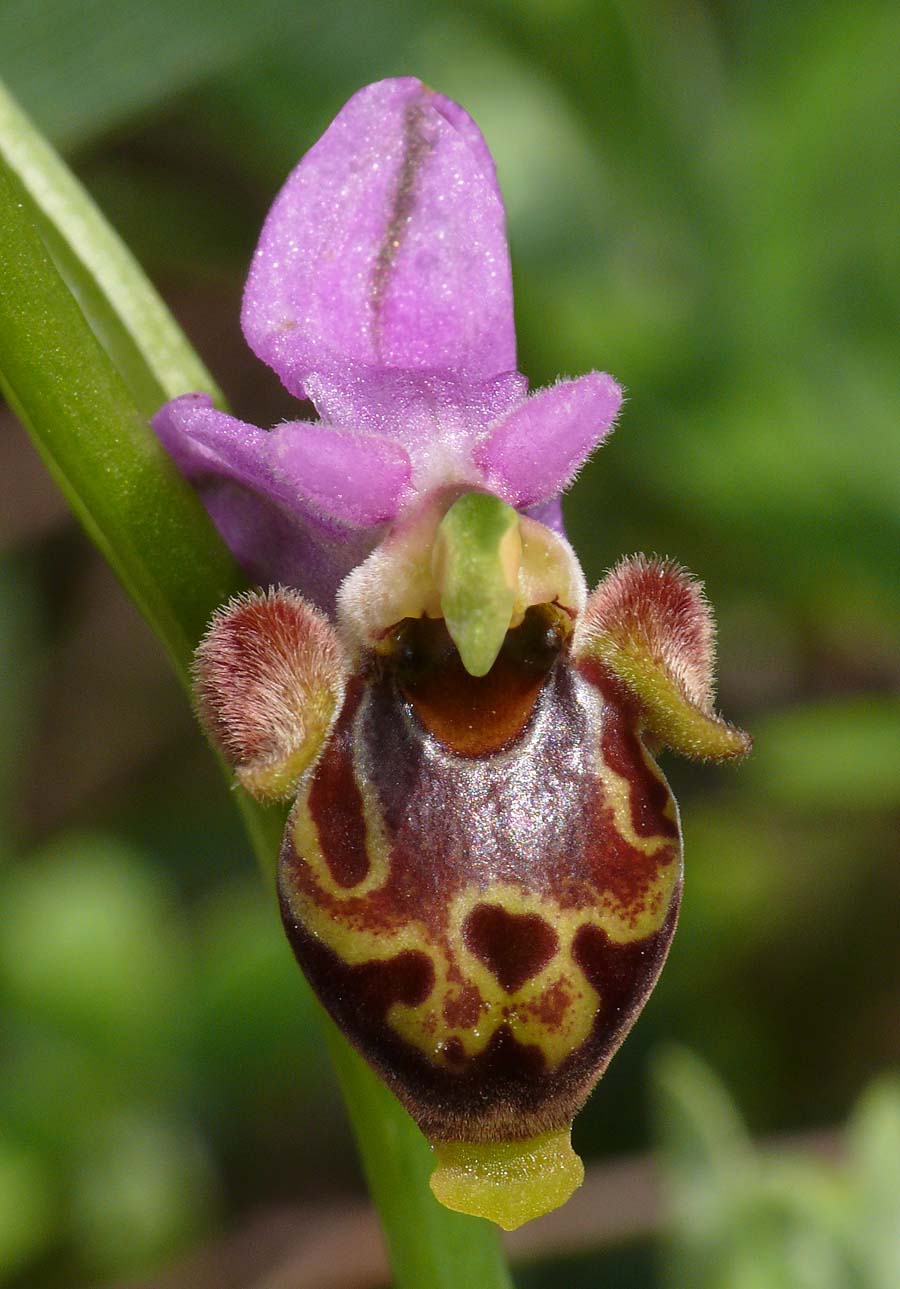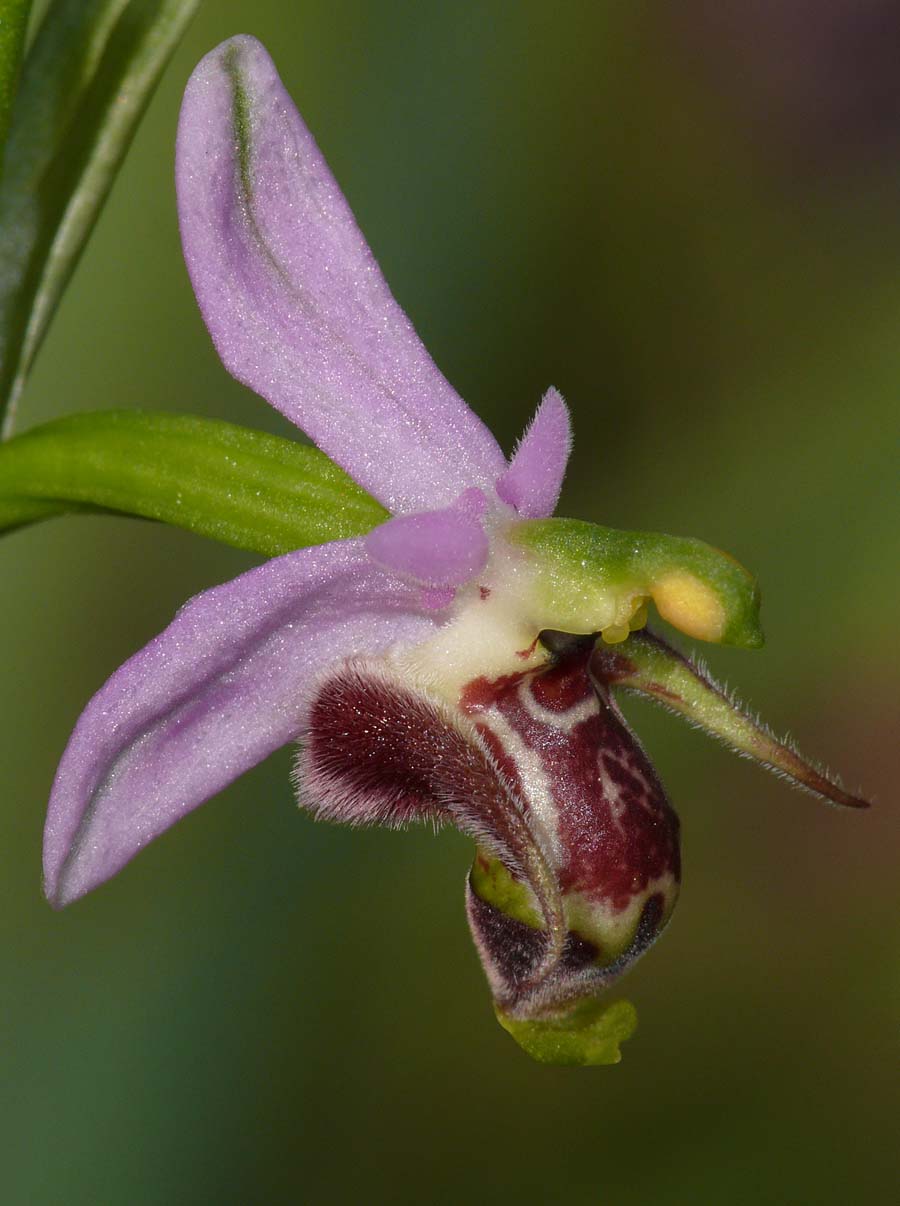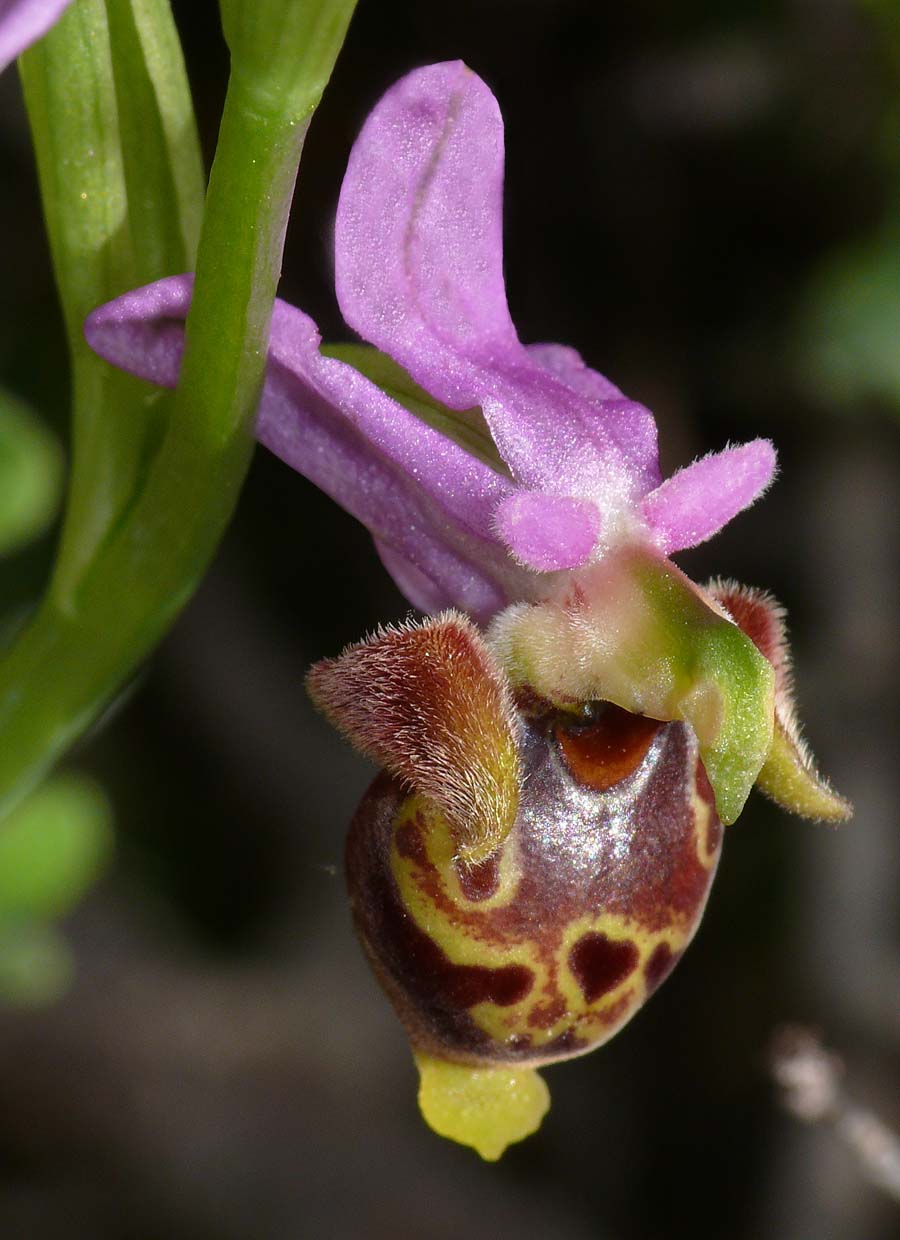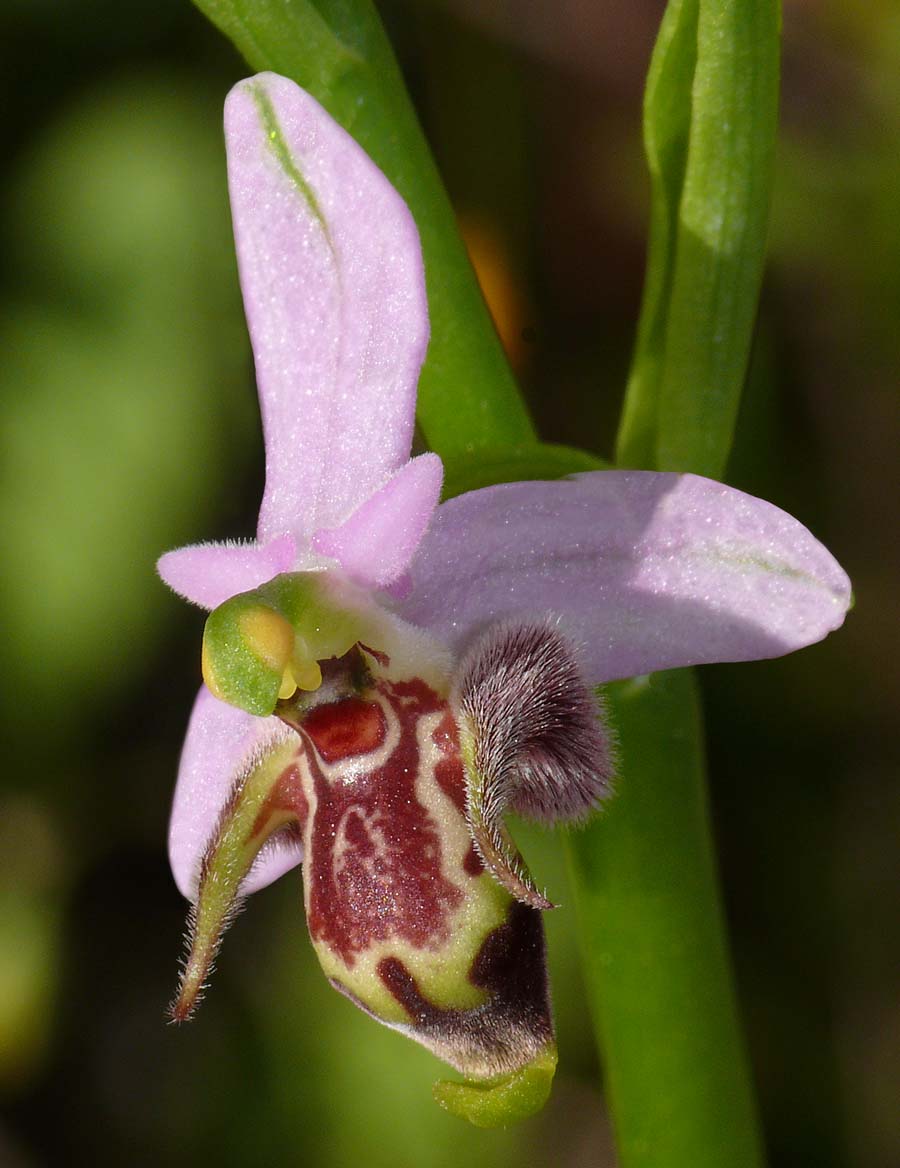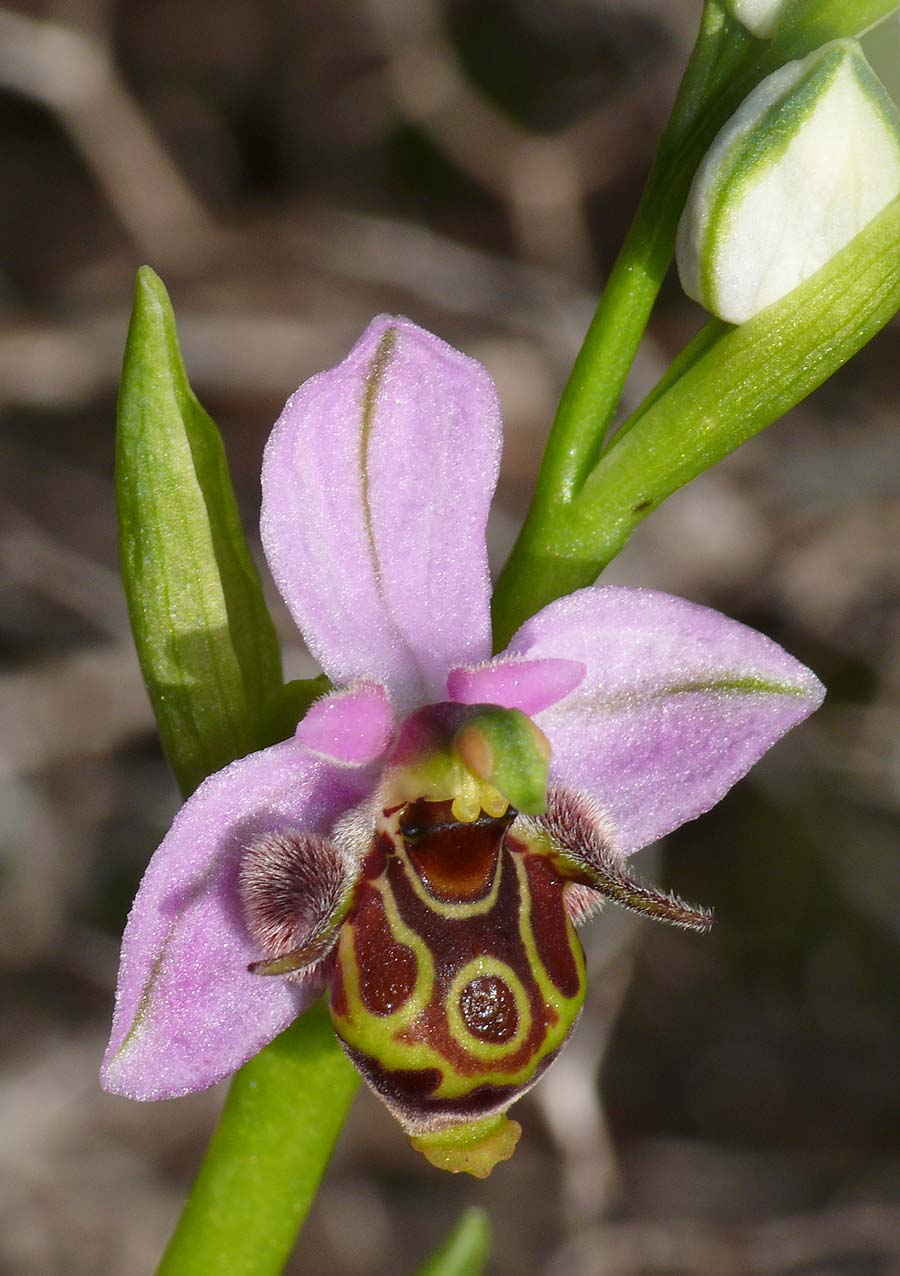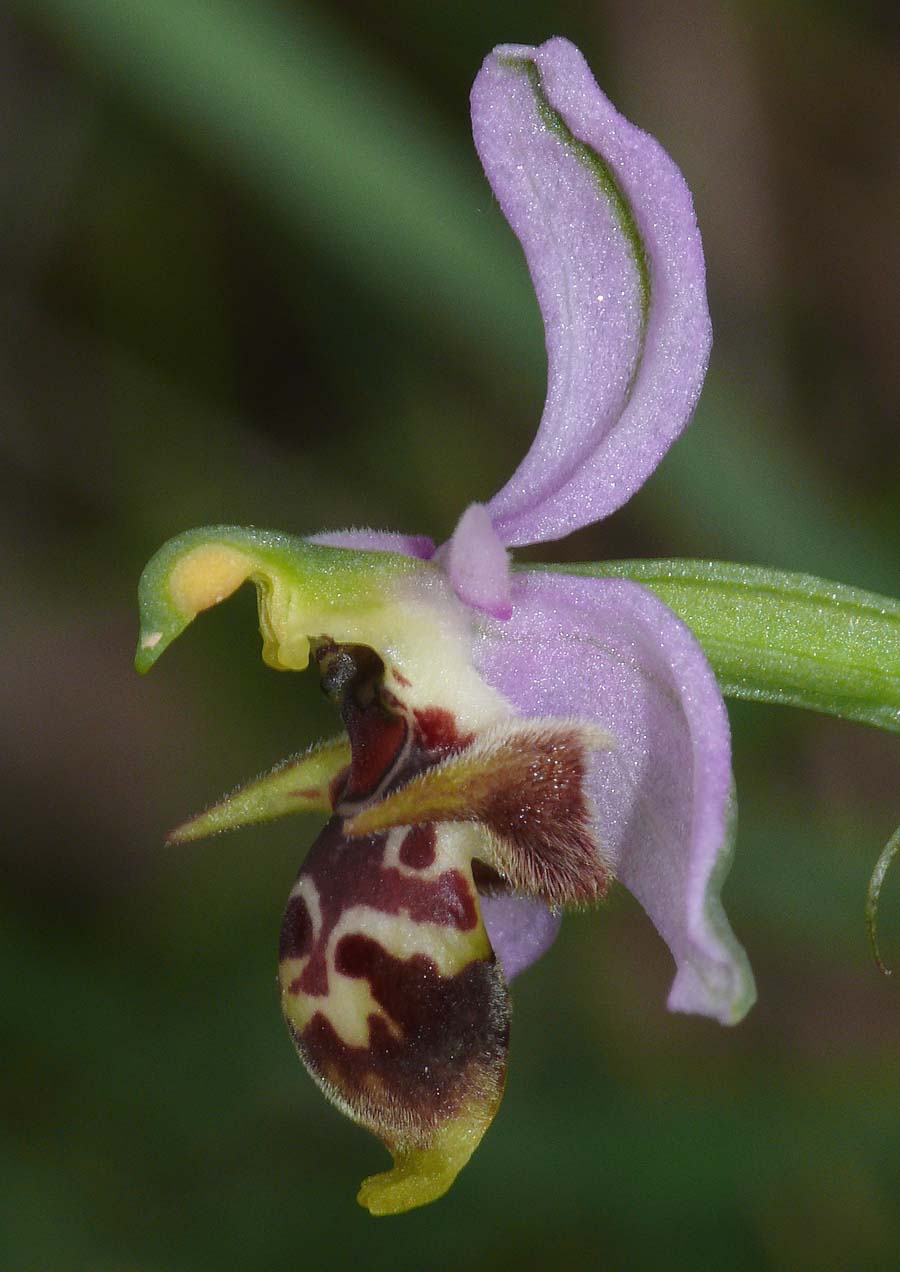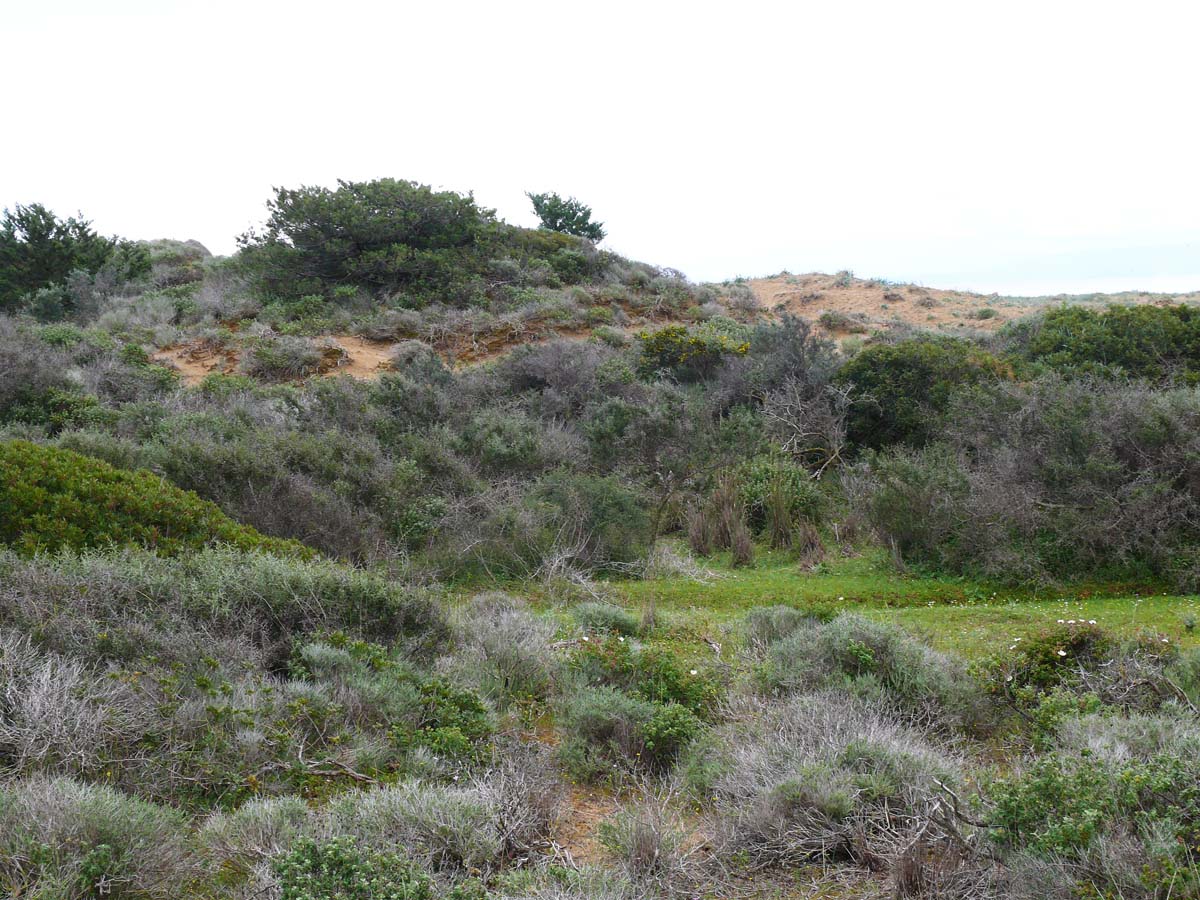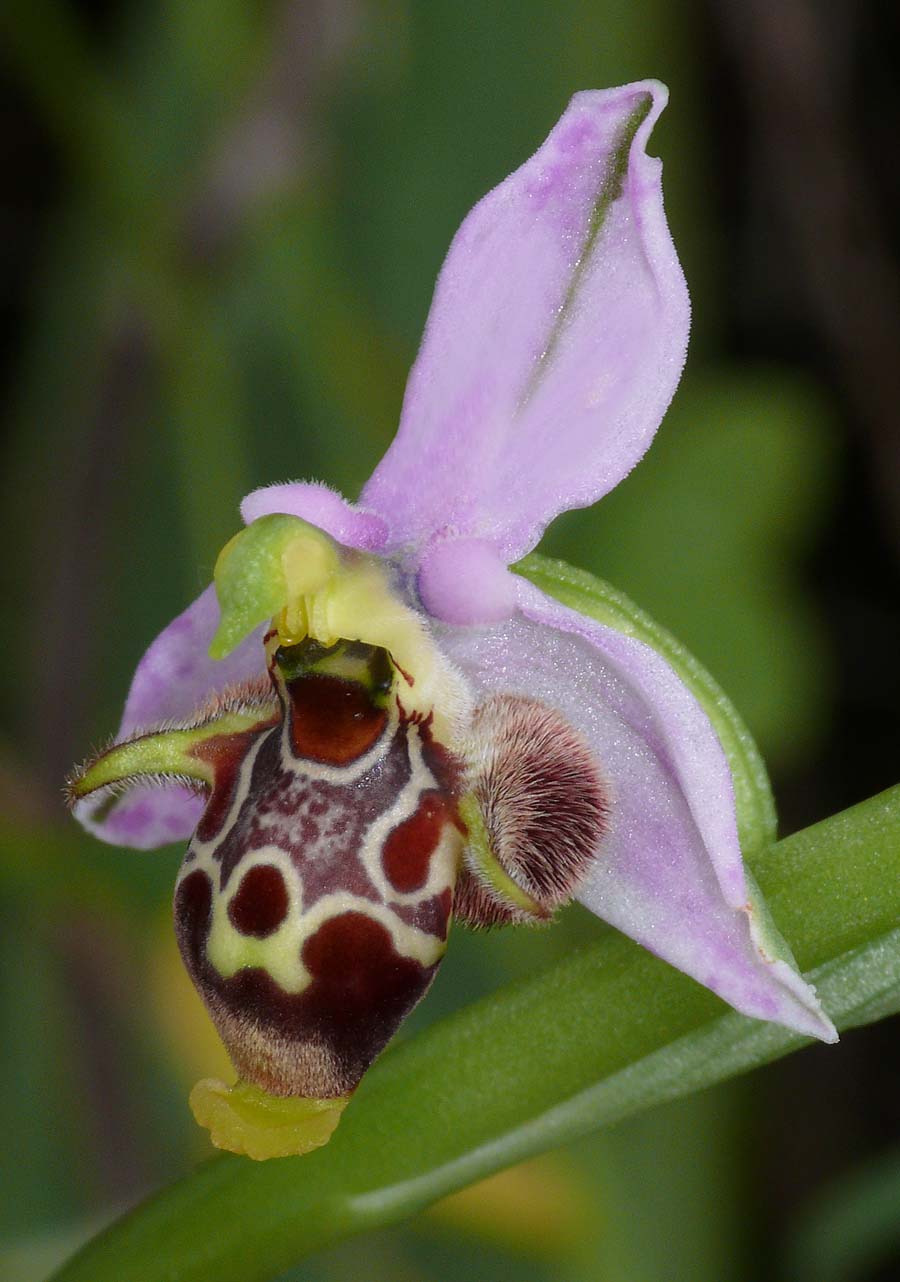O. stavri was first described as a subspecies from Attica by Kalogeropoulos, Delipetrou and Alibertis in 2012 but was subsequently promoted to full species status in 2014 by Delforge. Initially the number of plants discovered were few but many more sites have since been located and the species, although localised, has an ever widening range which now extends to small populations in both Cephalonia and Zakinthos.
Recent years have seen significant changes and the addition of several new taxons to the Greek list of scolopaxoid species and correctly separating these becomes ever more complicated. O. stavri in its typical form is however one of the more distinctive new species, being small flowered but with a decidedly plump appearance, especially when viewed in profile. O. stavri normally has a quite complicated specular pattern and this will frequently be accompanied by marbling and yellow or cream candicoid lining. This characteristic cannot however be taken as diagnostic and some plants will carry much simpler markings, closer in appearance to other O. oestrifera species. Lateral lobes are not a particularly useful guide either as they can vary from insignificant teddy bear ears to long outward pointing horns. The basal field does not extend very far onto the labellum and can often be almost subsumed by the extensive patterning.
The bulk of the photographs come from two sites between Megalopoli and Sparta in the Peloponnese but the final pair of pictures depict a Cephalonian plant of O. stavri and the sand dune habitat in which it was growing. The mainland plants date from the second week of April at which time they were in prime condition, whereas the Cephalonian example was the first open flower in a colony of perhaps a dozen plants.
